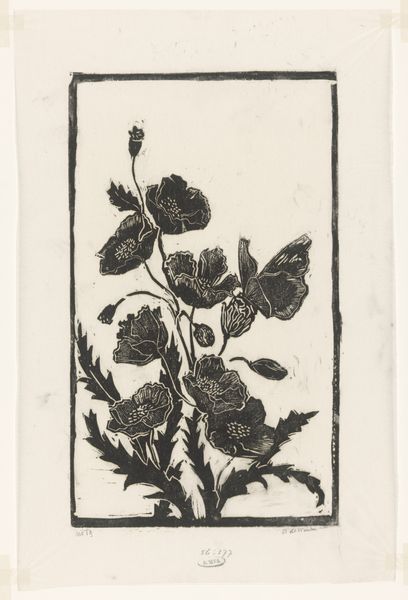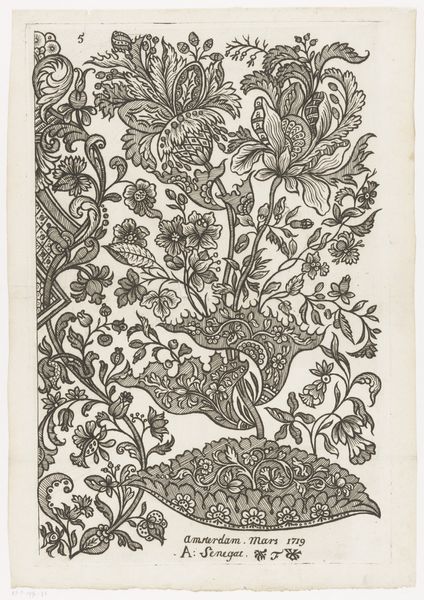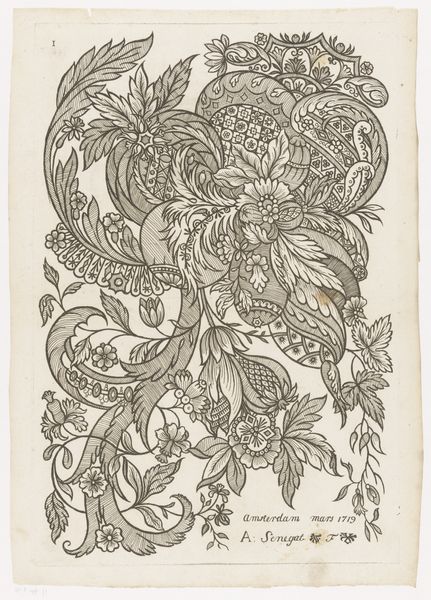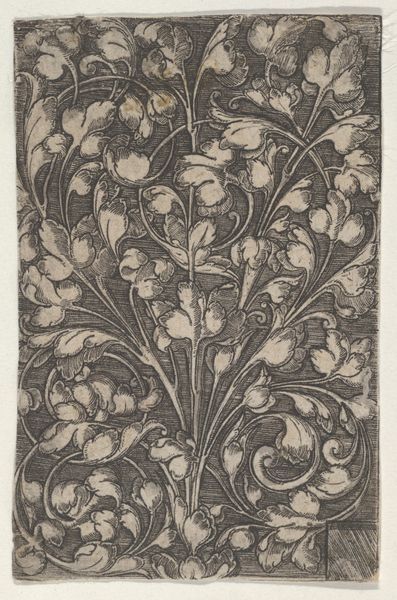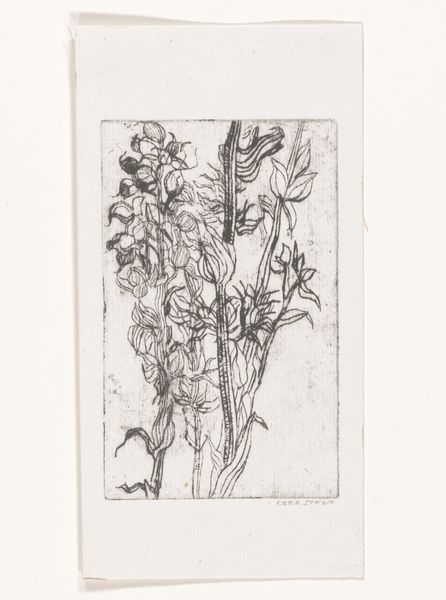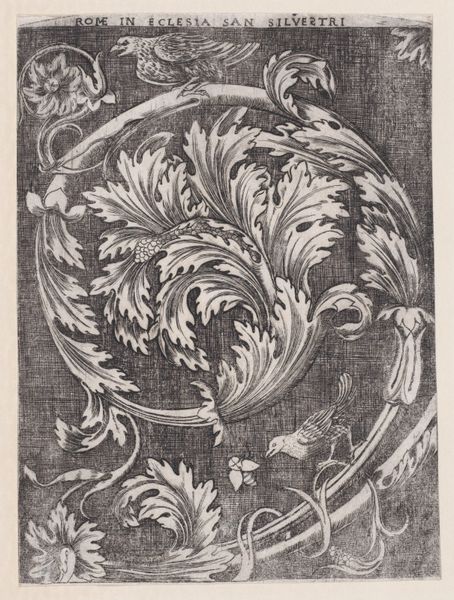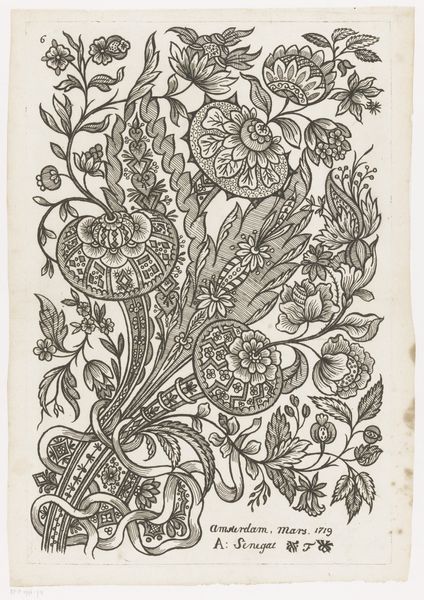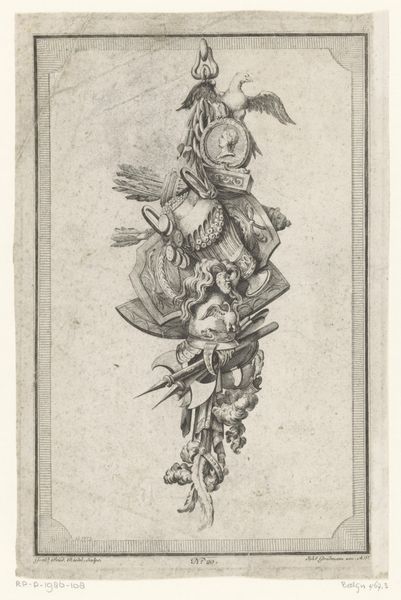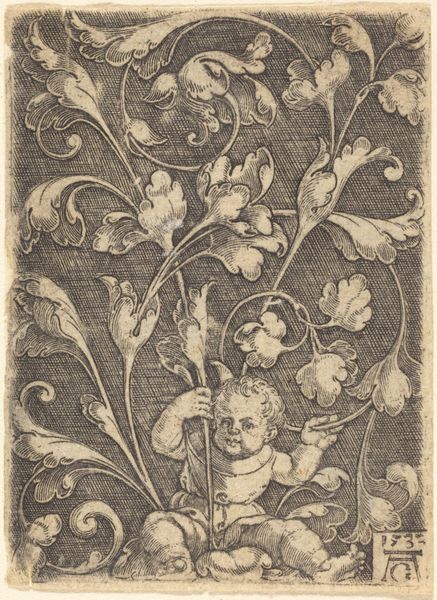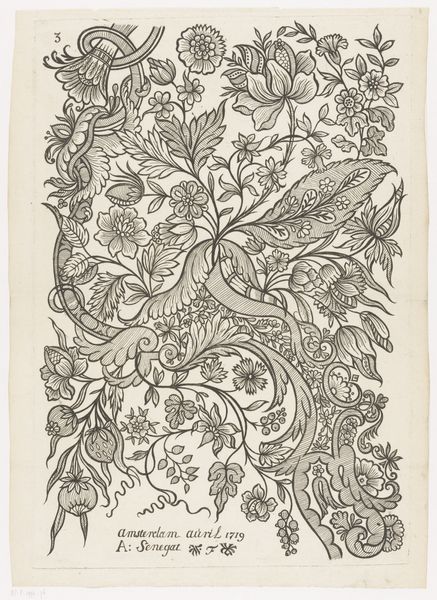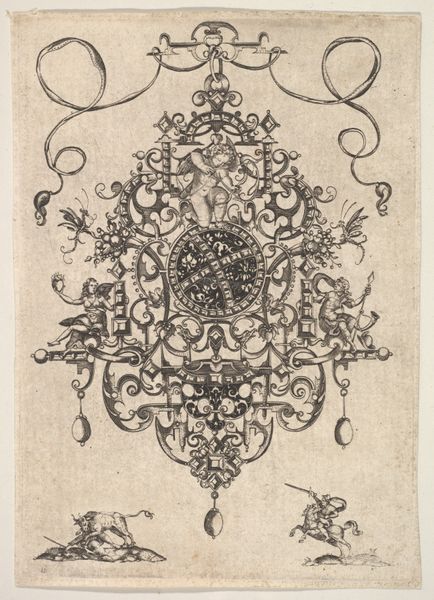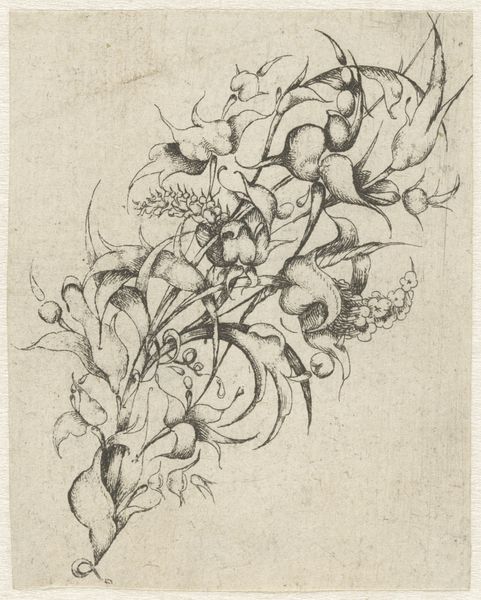
Flora Receiving Flowers and Festoon of Flowers 1525 - 1600
0:00
0:00
drawing, print, engraving
#
drawing
#
allegory
# print
#
northern-renaissance
#
nude
#
engraving
Dimensions: sheet: 9 15/16 x 2 5/8 in. (25.2 x 6.7 cm)
Copyright: Public Domain
Editor: So, this engraving, “Flora Receiving Flowers and Festoon of Flowers” by René Boyvin, dates back to somewhere between 1525 and 1600. It strikes me as this really interesting mix of classical imagery and botanical detail. What do you see in this piece, beyond its surface beauty? Curator: It's fascinating, isn't it? Look beyond the surface. This piece exists in a historical context where ideas about beauty, nature, and the female form were being codified. Flora, the Roman goddess, is presented as a symbol of idealized womanhood, passive and receptive. What does it say that she's 'receiving' rather than acting? How does this reflect the societal roles assigned to women at the time? Editor: I never really thought about that aspect. It makes her almost a passive object in the composition. Curator: Exactly. And who is offering the flowers? Who controls the act of giving, the control of beauty, essentially? The engraving technique itself, with its precise lines, reinforces a sense of control and order, almost a visual representation of societal structures and norms. Editor: It is interesting how the style, with its attempt at perfect replication of form and detail, could itself be a means of social control. So, the festoon, which at first appears just decorative, now carries more symbolic weight. It isn't merely beautiful but tells something more, I imagine. Curator: Precisely. Consider how the overwhelming cascade of flowers could represent the overwhelming expectations placed on women – to embody fertility, beauty, and docility. It’s almost suffocating, isn't it? Even in its apparent celebration of nature, we can see the seeds of constraint. What could this art mean when it portrays not simply flowers but also bare bodies? Editor: I suppose I came into this viewing the art, and thinking less about what it stood for! Curator: Which is fine; what do you leave here understanding better now? Editor: I now have a view of this artwork as more than the pure representation of something of simple surface-level pleasure: flowers, a nude woman, classical artistic style. It is a lens through which we might view women's place in art and society at the time it was made.
Comments
No comments
Be the first to comment and join the conversation on the ultimate creative platform.
